Situated in the Hoàng Liên Sơn mountain range close to Sapa, Fansipan Mountain has been referred to as the “Roof of Indochina” due to its impressive elevation of 3,143 meters. This beautiful mountain is highly sought after by adventure seekers and trekkers who want to explore nature to its fullest from all over the world. This guide will give you all the essential information to help plan your visit to Fansipan for an unforgettable experience.
Location
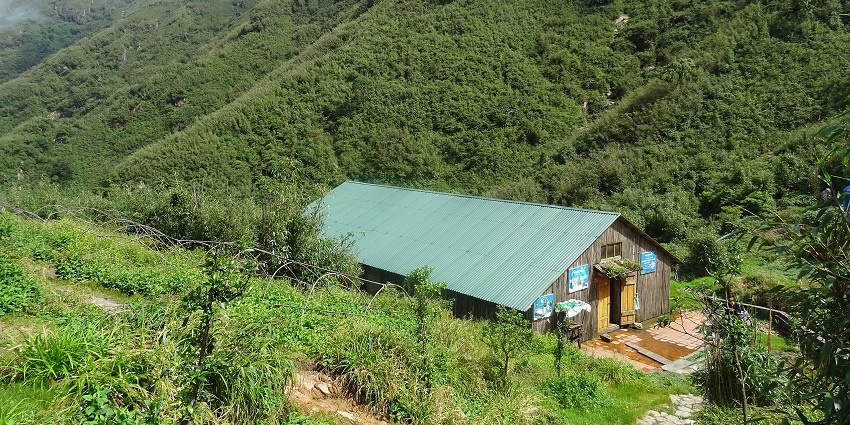
Photo: Christophe95 / Wikimedia Commons
Fansipan Mountain, which is Vietnam’s and Indochina’s highest peak, lies in the Hoàng Liên Sơn mountain range, close to Sapa in Lào Cai Province, Vietnam. Being located at an altitude of 3,147.3 meters, it is colloquially termed as the “Roof of Indochina.” The address of Fansipan falls under the Hoàng Liên National Park, about 9 km south-west of Sapa town.
How To Reach
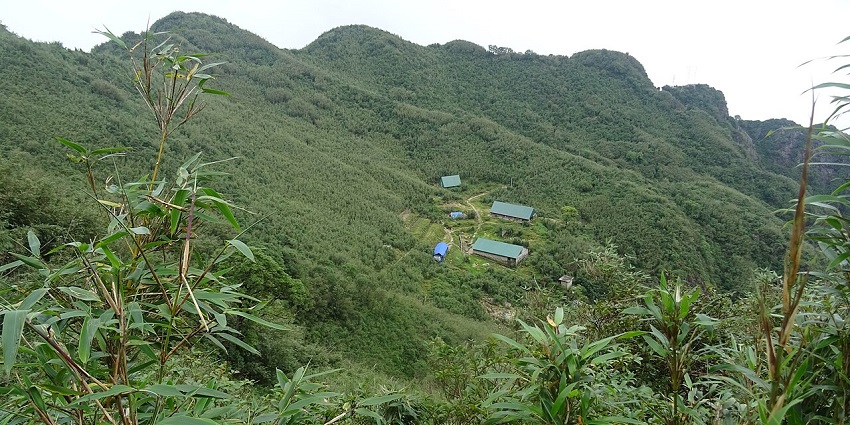
Photo: Christophe95 / Wikimedia Commons
By Cable Car: The shortest and most dramatic route to climb to the summit is through Fansipan Legend Cable Car from Sapa that takes around 15-20 minutes.
By Tour: A good number of the Sapa tourist agencies have packages with guided tours, such as transportation, feeding, and fees for admission at an expense-less experience.
By Taxi Or Private Car: Individuals can hire a taxi or a private vehicle from Sapa to the cable station for easy, fast access.
Things To Do At Fansipan Mountain
1. Take The Fansipan Cable Car
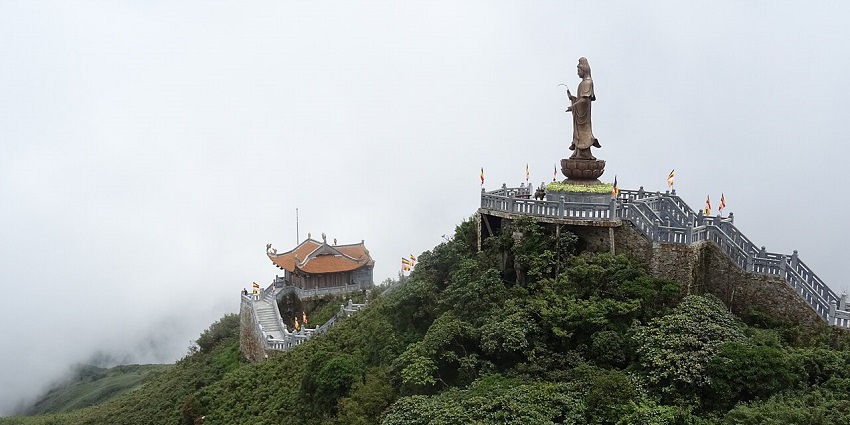
Photo: Christophe95 / Wikimedia Commons
The most sought-after method of visiting Fansipan is through the cable car trip. The top-of-the-line cable car system provides a panoramic ride over rolling clouds and green valleys, presenting you with views of the entire Hoàng Liên Sơn mountain range. The journey is approximately 15–20 minutes and is an excellent choice for those who wish to ascend to the top without hiking. A short hike or funicular train ride from the upper station will lead you to the summit.
2. Hike To The Top
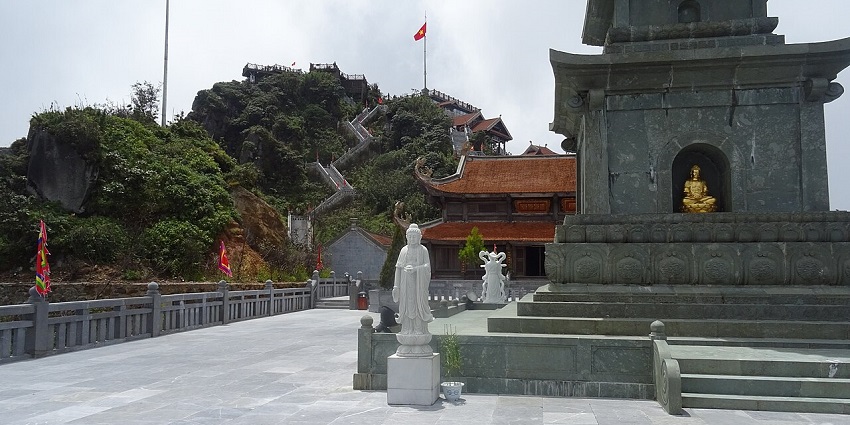
Photo: Christophe95 / Wikimedia Commons
For nature lovers and adventure seekers, climbing to the top of Fansipan is a must. Dubbed the “Roof of Indochina,” Fansipan is 3,147 meters high, making it the highest mountain in Vietnam, Laos, and Cambodia. The climb typically takes 1-3 days, depending on the trail you hike. You’ll hike through lush forests, bamboo forests, and beautiful vistas along the way, so the trip is almost as enjoyable as the destination.
3. Tour The Fansipan Legend Complex
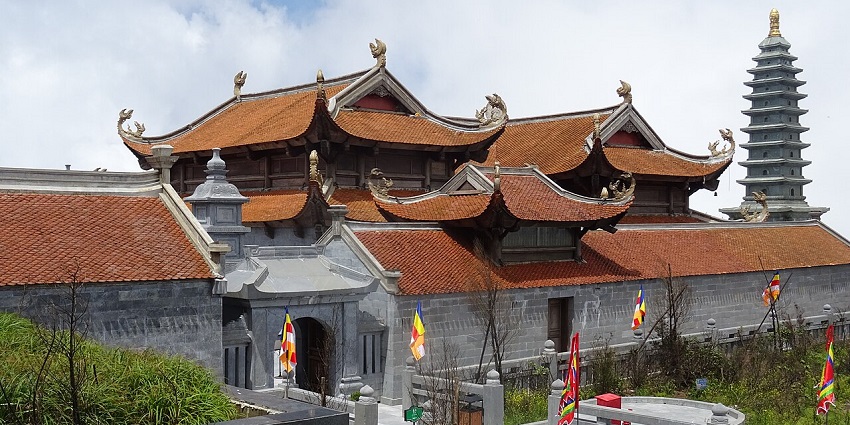
Photo: Christophe95 / Wikimedia Commons
At the summit of Fansipan stands the Fansipan Legend spiritual complex, a string of Buddhist pagodas, temples, and statues. The design is inspired by Vietnam’s rich spiritual and cultural heritage. Don’t forget to look at the huge bronze Buddha statue and the lovely stone stairs to the top. Here is where you can have your quiet and spiritual retreat amidst the clouds.
4. Visit Sapa Rice Terraces
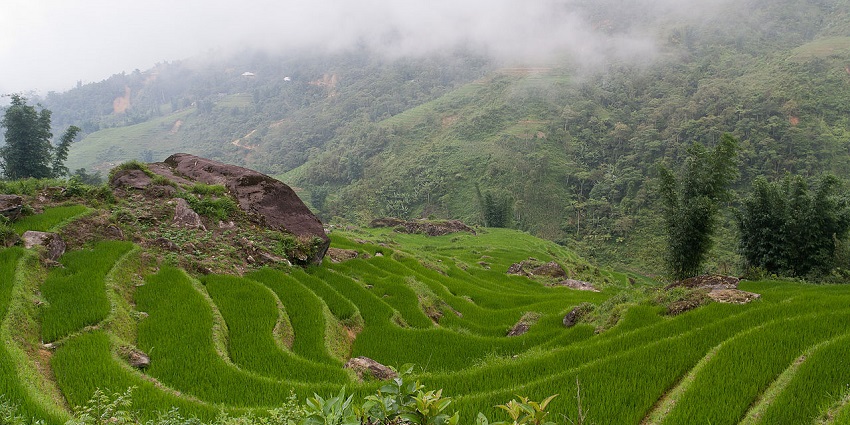
Photo: Ekrem Canli / Wikimedia Commons
No trip to Fansipan Mountain would be complete without a visit to Sapa, the picturesque mountain town that serves as its foothold. Sapa is renowned for its vibrant hill-tribe society, stunning rice terraces, and vibrant markets. Explore the Cat Cat Village, hike the Muong Hoa Valley, or simply take in the fresh mountain breeze while enjoying Vietnamese coffee.
Places To Visit Near Fansipan Mountain
1. Sapa Town
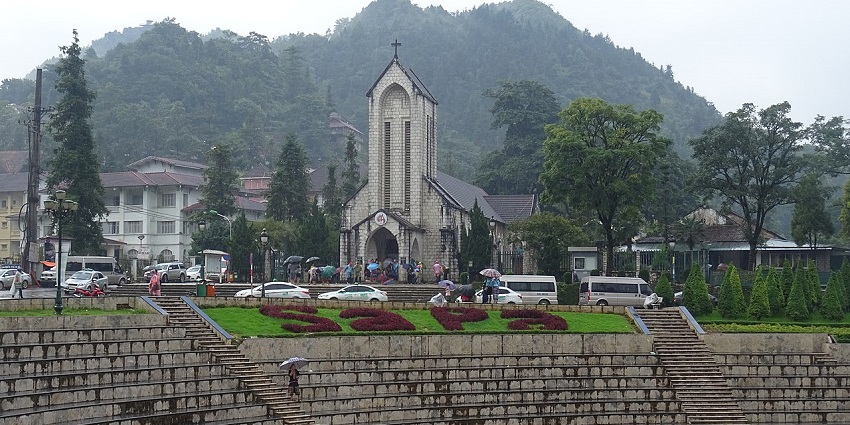
Photo: Christophe95 / Wikimedia Commons
Sapa Town is a picturesque town famous for its stunning scenery, lively local markets, and rich cultural heritage. The town is inhabited by different ethnic minority groups, such as the Hmong and Dao communities, who provide tourists with a glimpse of their traditional lifestyle. You can visit the vibrant Sapa Market, take in the breathtaking scenery from Ham Rong Mountain, or stroll around the scenic Sapa Lake. Sapa Town is the ideal destination for tourists who want to see both nature and culture.
Entry Fee: Free
Distance From Fansipan: 9 km
Best Time To Visit: Early morning or late afternoon
2. Cat Cat Village
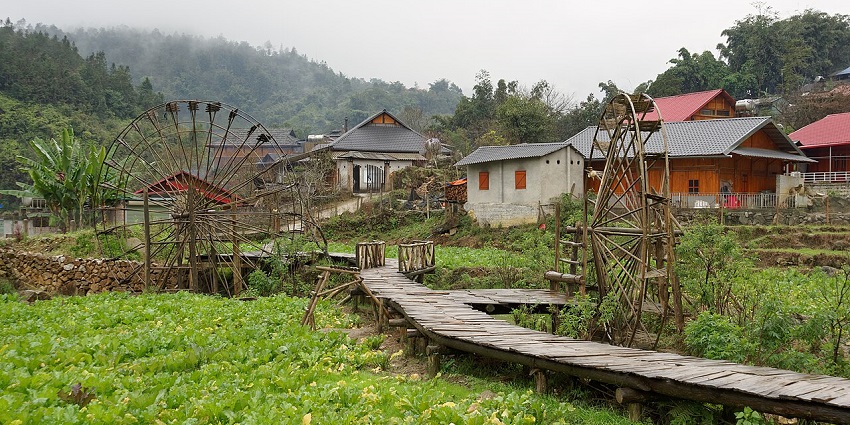
Photo: Jakub Hałun / Wikimedia Commons
Only 3 km away from Fansipan, Cat Cat Village is a traditional Hmong village providing a realistic ethnic experience. The village is renowned for its well-maintained wooden houses, picturesque rice terraces, and stunning waterfalls. The cobbled walkways allow visitors to stroll along, observe local artisans weaving textiles, and indulge in traditional Hmong performances. A visit to Cat Cat Village is not to be missed by those who want to see the rich heritage of the ethnic minorities in northern Vietnam.
Entry Fee: 90,000 VND
Distance From Fansipan: 3 km
Best Time To Visit: Early morning or late afternoon
3. Loveh Waterfall
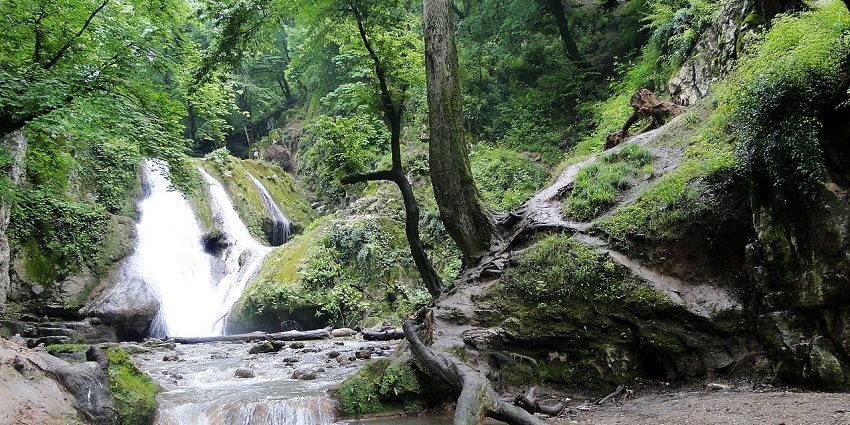
Photo: Arashk rp2 / Wikimedia Commons
Love Waterfall, 14 km away from Fansipan, is among the most beautiful waterfalls in the area. The 100-meter-high waterfall gently flows through the dense forest, producing a serene and romantic ambiance. The area is surrounded by colorful flora and fauna, and it is a great place for nature enthusiasts and photographers. A short hike in the Hoang Lien National Park brings one to this beautiful waterfall, providing the visitors with a once-in-a-lifetime experience amidst nature.
Entry Fee: 70,000 VND
Distance From Fansipan: 14 km
Best Time To Visit: Morning for optimal lighting and fewer tourists
Where To Stay
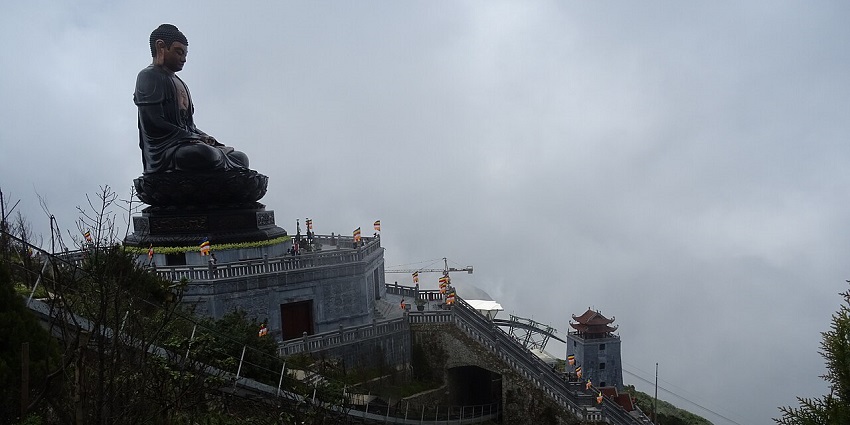
Photo: Christophe95 / Wikimedia Commons
Sapa Town has accommodations of various kinds to fit every taste. Victoria Sapa Resort & Spa offers the indulgence of luxury with great views of the mountain and excellent facilities. Sapa Highland Resort & Spa is another great choice, balancing comfort with the local Vietnamese look. Tourists seeking a more affordable accommodation can choose Sapa Capsule Hotel, which offers comfortable and quirky capsule rooms.
Where To Eat
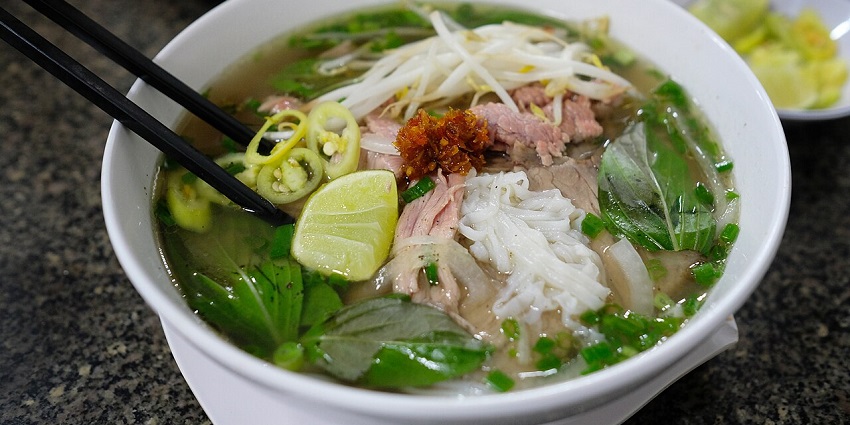
Photo: Vinnie Cartabiano / Wikimedia Commons
There are great eating places around Fansipan that allow you to try authentic Vietnamese food. Close to the foot of the mountain in Sapa, traditional cuisine such as smoked buffalo and stir-fried greens is offered by Red Dao House at the foot of the mountain in Sapa. Moment Romantic Restaurant is ideal for those seeking a combination of Vietnamese and Western dishes in an intimate atmosphere.
Best Time To Visit
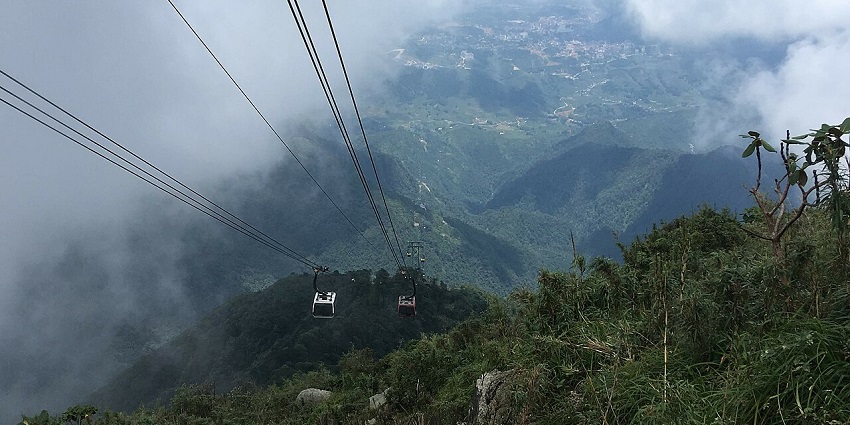
Photo: Christophe95 / Wikimedia Commons
The ideal time to visit Fansipan is in the dry season, between October and April. The weather is pleasant, with clear views of breathtaking scenery and pleasant trekking. March and April are particularly beautiful, with rhododendrons in bloom contributing brilliant colors to the trails. Dawn is the best time to see a captivating sunrise over the clouds, and later afternoons are a serene and less busy experience.
Other Factors To Consider
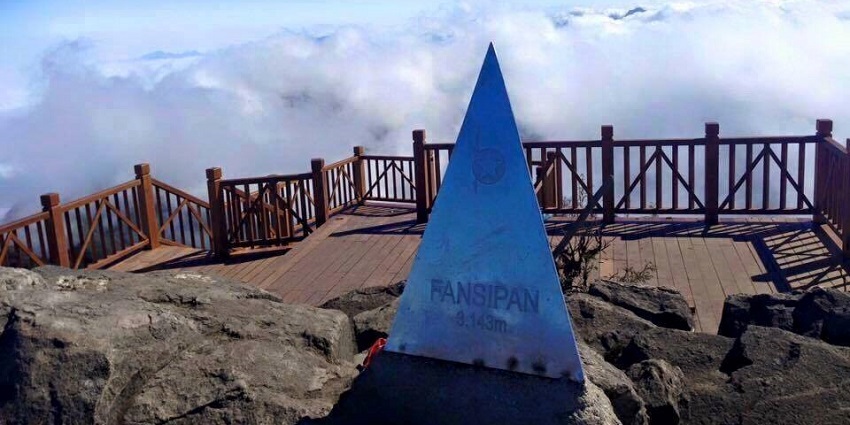
Photo: Viwikipediaorg / Wikimedia Commons
Average Cost Of The Tour
It costs an average of 700,000 VND (2,396.28 INR) to 1,500,000 VND (5,135.02 INR) to visit Fansipan Mountain, which includes cable car fees, transportation, and personal expenditure. It is recommended to bring enough cash, as some local traders, small restaurants, and transportation operators around Fansipan might not take cards. ATMs can be found in the nearby Sapa town.
Tips For Travellers
- Wear layers of warm clothing as the temperature decreases at higher elevations.
- Visit early morning for clearer skies and the best panoramic vistas.
- Wear sturdy trekking boots if trekking, as the trails are steep and slippery.
- Drink a lot of water and pack snacks, especially when using the trekking route.
- Take the cable car for a panoramic and relaxing ride to the summit.
Fansipan Mountain is a trekking adventure that treats you with stunning scenery and a sense of being one with nature. Being the tallest peak in Vietnam, it is an adrenaline-pumping but satisfying experience for hikers and tourists. Whether you hike or ride the cable car, the adventure is anything but ordinary. Photographing the scenery of Fansipan will make you remember your experience long after you leave. Book your tour with TripXL to make your trip to this grand summit a memorable one.
Cover Photo: Christophe95 / Wikimedia Commons


 WhatsApp
WhatsApp
 Twitter
Twitter









